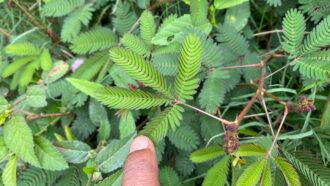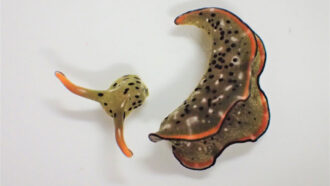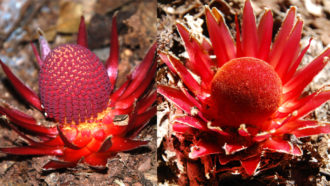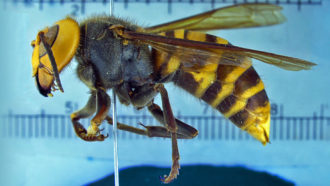
Susan Milius
Life Sciences Writer, Science News
Life sciences writer Susan Milius has been writing about botany, zoology and ecology for Science News since the last millennium. She worked at diverse publications before breaking into science writing and editing. After stints on the staffs of The Scientist, Science, International Wildlife and United Press International, she joined Science News. Three of Susan's articles have been selected to appear in editions of The Best American Science Writing.

All Stories by Susan Milius
-
 Animals
AnimalsA surprising number of animals eat poop
A new tally finds more than 150 vertebrate species willing to snack on feces. Eating poop offers nutrients and other benefits.
-
 Animals
AnimalsPutting vampire bats on treadmills revealed an energy-burning quirk
A mini gym for bats shows that vampire bats burn amino acids, rather than the carbs or fats other mammals rely on during exercise.
-
 Microbes
MicrobesWhat the weird world of protists can teach us about life on Earth
Microbes vastly outnumber multicellular life on Earth. A close-up look at protists highlights how much we don't know about the microscopic world.
-
 Plants
PlantsMimosa plant ‘muscles’ fold tickled leaves fast
A mimosa plant uses special cells to close leaflets when bumped and then reopen them — again and again.
-
 Animals
AnimalsSleeping glass frogs go into stealth mode by hiding red blood cells
Glass frogs snoozing among leaves blend in by hiding almost all their red blood cells in their liver.
-
 Animals
AnimalsSome young fruit flies’ eyeballs literally pop out of their heads
The first published photo shoot of developing Pelmatops flies shows how their eyes rise on gangly stalks in the first hour of adulthood.
-

A sea slug’s head can crawl around and grow a whole new body
Some chopped-up flatworms can regrow whole bodies from bits and pieces. But a sea slug head can regrow fancier organs such as hearts.
-

Tiny spider uses silk to lift prey 50 times its own weight
Dropping the right silk let’s a spider haul mice, lizards and other giants up off the ground.
-
 Plants
Plants‘Vampire’ parasite challenges the definition of a plant
Langsdorffia are stripped down to their essentials. Lacking green leaves for photosynthesis, they steal energy and nutrients from other plants.
-
 Animals
AnimalsWhat you need to know about ‘murder hornets’
Two new specimens of the world’s largest hornet have just turned up in the United States. Here’s what to make of them and other alien-hornet invaders.
-
 Animals
AnimalsBumblebees may bite leaves to spur plant blooming
In a pollen shortage, some bees nick holes in tomato leaves. This can speed up flowering and pollen production by weeks.
-
 Animals
AnimalsWhy elephants and armadillos might easily get drunk
Stories of drunken elephants may not be a myth. Differences in a gene for breaking down alcohol could explain how they get tipsy.